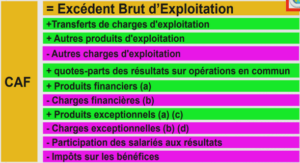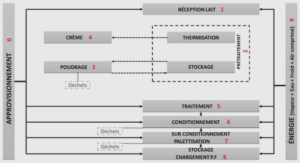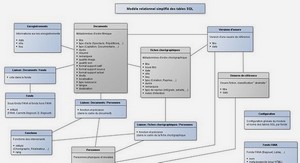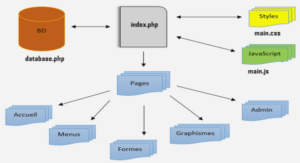Big Data Analytics
Data Privacy Protection
I have banking/investment accounts with five major financial institutions. A major bank recently approached me to consolidate all my banking accounts with them. As we were going through the details, I was being asked to share a fair amount of private information. I wondered how much the bank already knew about me, since I have dealt with them for over a decade and have given them access to credit reports and mortgage applications. Also, a data scientist at the bank could correlate information authorized by me, information publicly available, and self-provided personal information. How is this full and complete view of my customer profile stored and accessed at the bank? We have heard about data security breaches. Recently, the Wall Street Journal published an article about a Yahoo! security breach that exposed 453,000 unencrypted user names and passwords.24 Is all this data that the bank is collecting about me safe? Often, we assume a large global brand is safe; however, the recent data breaches include a long list of famous brand names. While an outright data breach is catastrophic and feared by most corporations, predictive models may uncover private facts not yet shared openly and could also lead to privacy loss. Let me illustrate with a famous news story from consumer marketing. Charles Duhigg, a staff writer for the New York Times, dug up the process for predicting consumer attributes used by the retailer Target. In his article, he describes how statisticians at Target created a sophisticated customer segmentation model that analyzed customer purchase behavior to predict customer life-cycle stages and related micro-segments. One of the predictive models was a “pregnancy-prediction” model that could predict with reasonable accuracy whether the customer making the purchase was expecting a baby. Unfortunately, the resulting Target campaign reached a house with a girl in high school, and her father decided to make a visit to the Target store. “My daughter got this in the mail!” he said. “She’s still in high school, and you’re sending her coupons for baby clothes and cribs? Are you trying to encourage her to get pregnant?” The manager at Target promptly initiated an investigation to understand how the campaign was mailed to this girl. However, in a later communication, the girl’s father apologized, stating, “I had a talk with my daughter. It turns out there’s been some activities in my house I haven’t been completely aware of. She’s due in August. I owe you an apology.”25 44 • Big Data Analytics The data privacy for Big Data is a serious business and is causing regulators around the globe to set up a variety of policies and procedures. Recently, the U.S. Federal Trade Commission settled a case with Facebook that now requires Facebook to conduct regular audits. Facebook, Inc., agreed to submit to the government audits of its privacy practices every other year for the next two decades. The company also agreed to obtain explicit approval from users before changing the type of content it makes public.26 Similar processes have been put in place at MySpace and Google. In many cases, consumers trade their privacy for favors. For example, my cable/satellite provider sought to have my channel click information shared with a search engine provider. They offered me a discount of $10 if I would “opt-in” and let them monetize my channel surfing behavior. This leads us to several interesting possibilities. Let us say that a data scientist uses the channel surfing information to characterize a household as interested in sports cars (for example, through the number of hours logged watching Nascar). The search engine then places a number of sports car advertisements on the web browser used by the desktop in that household and places a web cookie on the desktop to remind them of this segmentation. Next, a couple of car dealers pick up this “semi-public” web cookie from the web browser and manage to link this information to a home phone number. It would be catastrophic if these dealers were to start calling the home phone to offer car promotions. When I originally opted in, what did I agree to opt-in to, and is my cable/satellite provider protecting me from the misuse of that data? As we move from free search engines to free emails to discounted phones to discounted installation services, all based on monetization of data and advertising revenue, there is money for everyone, if the data is properly protected against unauthorized use. The first part of the solution is a data obfuscation process. Most of the time, marketers are interested in customer characteristics that can be provided without Privately Identifiable Information (PII)—that is, uniquely identifiable information about the individual that can be used to identify, locate, and contact an individual. We can possibly destroy all PII information, which may still provide useful information to a marketer about a group of individuals. Now, under “opt-in,” the PII can be released to a selected few, as long as it is protected from the rest. In the preceding example, by collecting $10, I may give permission to a web search engine to increase sports car advertisements to everyone in my Zip+4 while at the same time expecting protection from dealer calls, which require a household-level granularity. We can provide this level of obfuscation by destroying PII for house number and street name while leaving Zip+4 information in the monetized data. Chapter 4: Architecture Components • 45 As we worked on the data obfuscation process, we found that this process is a lot more complex than expected. While PII data is destroyed, we cannot leave related information that, if joined with obfuscated data, might lead to the individual. For example, if we destroyed the address and phone number but left location information, someone could use the location information to establish the residential address. Also, there are grades of PII information. Zip+4 or county designation may be an appropriate locater unless we are dealing with home addresses of billionaires. Also, small samples are a problem. The non-PII information could uniquely identify an individual if only one individual meets the profile. IBM has been investing in data masking products and processes, which allow us to systematically identify PII information in a data set, tag it, select masking algorithms, test the masking process, and establish the effectiveness of the masking solution (see Figure 4.6 and details on the USPTO site27). Data masking algorithms are equally interesting. The algorithm should remove or randomize PII but not destroy statistical patterns required by a data scientist. For example, if we take a set of real addresses and replace them with XXX, anyone looking for statistical patterns along geographic boundaries would not be able to use the obfuscated data. We have developed a number of algorithms that preserve the uniqueness of the IDs or the statistical patterns while obfuscating the PII data in groups.28 Figure 4.6: Data masking process 46 • Big Data Analytics A privacy infrastructure provides the capability to store information about “opt-in” and to use it for granting access. Anyone with proper access can obtain the PII information, as granted by the user, while others see only obfuscated data. This solution provides us with enormous capability to use statistical data for a group of individuals while selectively offering “one-to-one” marketing wherever the consumer is willing to accept the offers. An audit can test whether the obfuscation process, algorithms, and privacy access are working properly in a multi-partner environment where third parties may also have access to this data. If properly managed, the data privacy framework provides gated access to marketers based on permission granted by the consumer and can significantly boost consumer confidence and ability to finance data monetization.
Real-Time Adaptive Analytics and Decision Engines
As I was watching a movie online recently, the website displayed an advertisement every 10 minutes. Since I had not paid anyone for watching the movie and am used to watching commercials on television, it should not have been a big deal to see a commercial every 10 minutes or so. The website, however, decided to show me the same commercial over and over. After about the fifth time, I felt sorry for the poor advertiser (one of the two U.S. presidential candidates) because the effectiveness of the ad had long since dissipated and, instead, an annoyance factor had crept in. I was facing a real-time decision engine that was rigid and was placing an advertisement without any count or analysis of saturation factor. (As an aside, I live in a “swing state” for the fall 2012 U.S. presidential elections, so it is possible the advertising agency for the candidate had decided to saturate the Internet advertisements to my location.) How do we build real-time decision engines that are based not on static rules but on real-time analytics and are adaptive, introducing changes as they are executed? In real-time ad placement, a number of factors could have been used as input using information already available to the website that was offering me the movie. For example, the site was well aware of the movie genre I had accessed during several visits to the site. An analysis of this genre could have placed me in several viewing segments. In fact, the same website offers me movie recommendations, which are based on prior viewing habits. This recommendation engine could be offered to the marketers in placing advertisements that match my viewing habits. Advertisements saturate over a given number of times, after which any additional viewing is ineffective. The website could count the number of times Chapter 4: Architecture Components • 47 an ad was displayed and decrement the likeness score for the specific ad each time it was shown, thereby favoring a different advertisement to be shown after a certain number of views. A number of sophisticated marketing experiments can be run to effectively control the saturation effect. After watching the movie for a while and repeatedly viewing the same advertisement, I decided to take a break to search for a food processor as a gift to my son. When I returned to watching the movie, I again faced the same advertisement. I had secretly hoped that my food processor search would conveniently trigger an advertisement for a good food processor to help me in my purchase. By sensing and analyzing my previous web searches, marketers could have offered me appropriate information or deals, thereby increasing the advertisement relevance for me. It seems there are two sets of input variables that constantly impact the success of advertising. The first includes search context, saturation, and response to advertisement and is fast-moving and must be tracked in real-time. The second set includes viewing habits, shopping behaviors, and other micro-segmentationrelated variables and is either static or changes gradually, accumulating over a long time period. How would real-time adaptive analytics and decision engines acquire the background and accommodate changes to the models while at the same time rapidly executing the engine and providing a context-dependent response? There are four components of a real-time Adaptive Analytics and Decision Engine (see Figure 4.7). A sensor identifies an incoming event with a known entity. If we do not identify this identity, we can create a new one. However, if this is a known entity that we have been tracking, we will use the identifiers in the event to connect it to previous history for this entity. The entity can be an individual, a device (e.g., a smartphone), or a known web browser identified via a previously placed cookie Figure 4.7: Real-time adaptive analytics 48 • Big Data Analytics or pixel (see note29 for web tracking technologies). Under opt-in, if we placed a coupon on a smartphone and the person opted-in by accepting the coupon, we may have a fair amount of history about the individual. The analytics engine maintains a detailed customer profile based on past-identified history about the entity. The predictive modeler uses predictive analytics to create a cause-effect model, including impact of frequency (e.g., saturation in advertisement placement), offer acceptance, and micro-segmentation. The scorer component uses the models to score an entity for a prospective offer. While sensor and scorer components may operate in real-time, the analytics engine and predictive modeler do not need to operate in real-time but work with historical information to change the models. Returning to our example of online advertising, a cookie placed on the desktop identifies me as the movie watcher and can count the number of times an ad has been shown to me. The scorer decrements an advertisement based on past viewership for that advertisement. The analytics engine maintains my profile and identifies me as someone searching for a food processor. The predictive modeler provides a model that increases the score for an advertisement based on past web searches. The scorer picks up my context for web search and places a food processor advertisement in the next advertisement placement opportunity. The sensor and scorer work in milliseconds while the analytics engine and the modeler work in seconds or minutes. Without a proper architecture, integration of these components could be challenging. If we place all of these components in the same software, the divergent requirements for volume and velocity may choke the software. The real-time components require rapid capabilities to identify an entity and use a number of models to score the opportunity. The task is extremely memory and CPU intensive and should be as lean as possible. On the other hand, the analytics engine and predictive modeler may carry as much information as possible to conduct accurate modeling, including three to six months of past history and the ability to selectively decay or lower the data priority as time passes by or subsequent events confirm purchases against previously known events. I may be interested in purchasing a food processor this week, and would be interested in a couple of well-placed advertisements, but the need will diminish over time as I either purchase one or lose interest.






